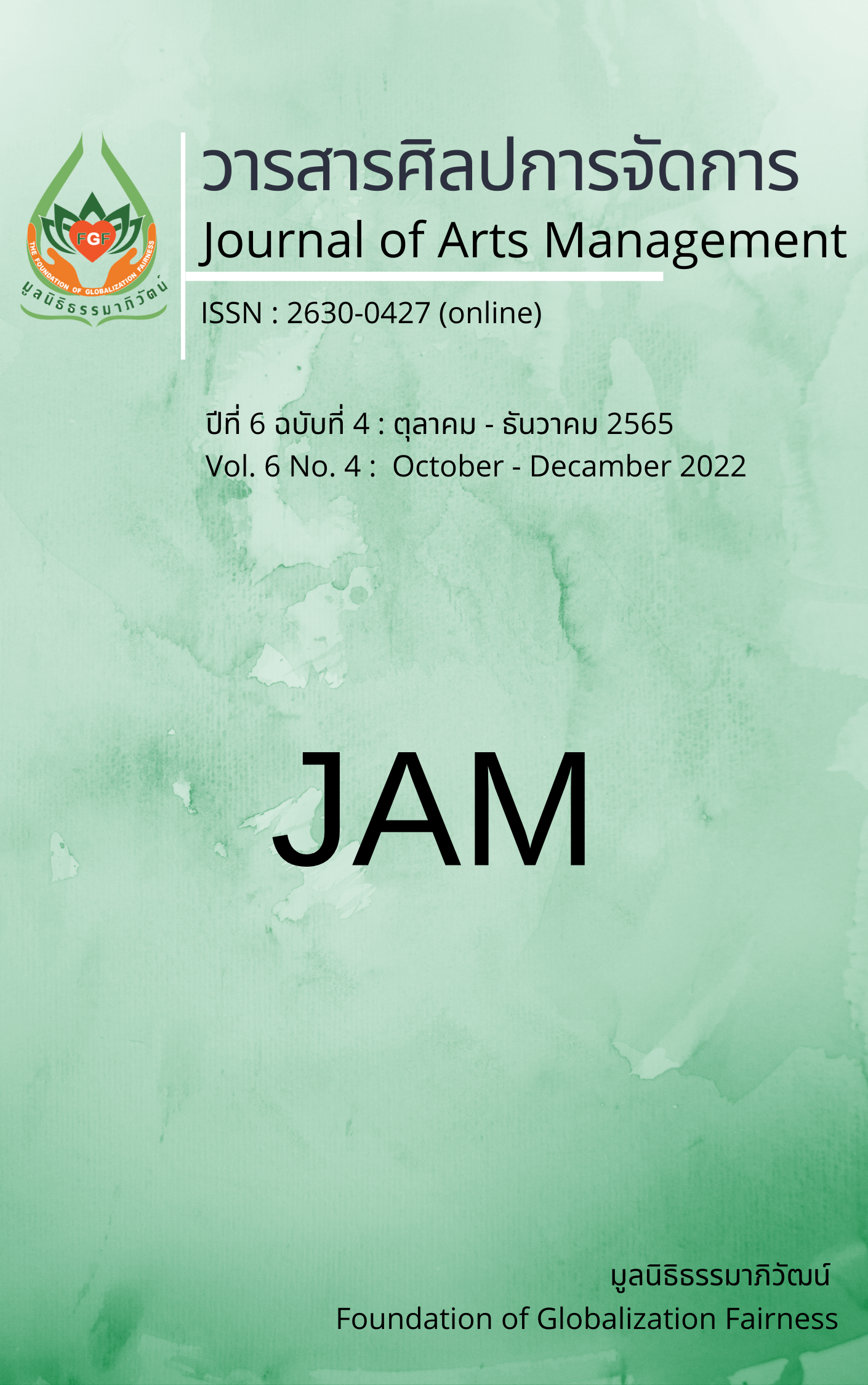Analysis of Perspectives on Social Phenomena Concerning 100 Million Ordination Ceremony According to Theravãda Buddhist Principles
Main Article Content
Abstract
This research article was a documentary research aimed at analyzing the perspectives on the social phenomena of 100 million ordination ceremonies according to Theravāda Buddhist principles in terms of 1) the prospective ordainees’ purposes, 2) the ordination ceremony, 3) the objectives of ordination, and 4) the relationship among those three points. The study found as follows: 1) The prospective ordainees’ purposes, they had the intention behind ordination to repay their parents' favors. It was considered a secondary purpose that they had to fulfil; 2) A typical ordination ceremony was considered a festive event although it was suitable to the economic status of the ordainees and their families. However, an ordination festive event also included vice as its disadvantage; 3) As for the objectives of ordination, it is assumed that the ordained monks had reached the primary state of sensual pleasures; that is, they observed the monastic codes and did not commit misconduct in monkhood; and 4) The relationship among the ordainees’ purposes, the ordination ceremony, and the objectives of ordination was considered as an "A2B3C1" relationship. In other words, the ordainees’ secondary purpose for their parents (A2), a festive ordination ceremony (B3), and their compliance with the monastic codes in monkhood in order to arrive at the primary state of sensual pleasure (C1) were related.
Article Details

This work is licensed under a Creative Commons Attribution-NonCommercial-NoDerivatives 4.0 International License.
Views and opinions appearing in articles in the Journal of Arts of Management It is the responsibility of the author of the article. and does not constitute the view and responsibility of the editorial team I agree that the article is copyright of the Arts and Management Journal.
References
Adiwatanasit, C. (1995). Research report on ordination behavior of Thai people. Faculty of Social Sciences, Kasetsart University.
Akkamahakammatthanachariya, P. A. (2005). Chattaro Satipatthana (4th ed.). Foundation for Vipassana Friendship.
Amarin 34 HD. (2020). Brother of "Gigi" Pipo" claimed that the monastery and the province gave him the opportunity to organize an ordination ceremony for 100 million baht. Spotlight. https://www.amarintv.com/news/detail/53236
Buddhadasa, B. (1986). Following in the footsteps of Arahants (5th ed.). Sukkhapabjai.
Buddhadasa, B. (2000). Why ordain? (2nd ed.). editor by Warut Thongchua. Sukkhapabjai.
Buddhadasa, B. (2006). Objectives of the ordination. Thammasapa.
Buntamat, P.T., Putrakam, B., & Wannatong, P. (2019). Solution Problems of ordination: clashes between Thai cultural values with new values in today's society. Journal of MCU Social Development, 4(1), 120-134.
Chotiban, C. (1960). The origin of Thai-Chinese traditions. Liang Chiang Jongcharoen.
Dailynews. (2020). Revealing the ordination ceremony of “Gigi Pipo” spent 100 million, offering to organize the ordination ceremony through every step. Dailynews. https://d.dailynews.co.th/regional/805203/
Dogbua, F. (1999). Buddhism and Thai people. Silapabunnagarn.
Kom Chad Luek online. (2020). The National Buddhism Office has rushed to investigate and stop publishing photos of Gigi Pipo's 100 million ordination ceremony. Kom Chad Luek online. https://www.komchadluek.net/news/448245
Mahachulalongkornrajavidyalaya University. (1996). Thai Tripitaka. MCU Press.
Mahamakut Buddhist University. (1993). Thai Tripitakas and Commentaries, Set of 91 Volumes (3rd ed.). MBU Press.
Methawittayakul, S. (1999). The concept of rituals. Odeon Store.
Ministry of Education. (1991). Economical traditions of ordination, wedding ceremonies, and funeral ceremonies. Amarin.
Ministry of Education. (1995). Economical Ordination Traditions. Office of the National Cultural Commission, Ministry of Education.
ONB News. (2020). Phra Gigi Pipo built a statue of Naga and Mother Earth for the temple until it was completed in 7 days. ONB News. https://www.onbnews.today/post/41516
Payutto Bhikkhu, P. A. (1999). Teaching Naga-teaching dita, Monk's life-Buddhist life. Dhammasarn.
Payutto Bhikkhu, P. A. (2003). Buddhadhamma, Revised and Expanded Edition (10th ed.). Sahadhamik.
Phra Brahmagunabhorn (P.A. Payutto). (2008). Buddhist dictionary Vocabulary edition (12th ed.). S.R. Printing Mass Products.
Phra Brahmagunabhorn (P.A. Payutto). (2013). Chronology of Buddhism in World Civilization (19th ed.). Palidham.
PPTV Online. (2020). Share it! 100 million ordination ceremony "Gigi Pipo", the owner of the famous Petchthong shop, it was beautifully built and had a grand ceremony. PPTV HD 36. https://www.pptvhd36.com/news/ประเด็นร้อน/136148
Prien, J. (1992). Thai auspicious ceremonies. Amnuaysarn.
Suwannarong, P. P., Boondo, S., & Anothai, S. (2020). The Hyper Reality in the Ordination Ceremony in the Buddhism Through the Postmodern Philosophy. Saint John's Journal. 23(32), 138-139.
Tangsuthijit, C. (2564). Naga ordination, Kwan Naka, and the largest Naga parade in Thailand. Culture. http://article.culture.go.th/index.php/layouts-modules-positions/3-column-layout-7/266-2021-08-25-14-12-48
Thai Post. (2019). Director-General of the Department of Religious Affairs, raising awareness “The ordination ceremony must be peaceful and calm”, it should not have dance-coyote-loud noises. Thai Post. https://www.thaipost.net/main/detail/29915
Thammasapa (collector). (2006). Buddhadasa Bhikkhu's Dharma Dictionary with explanations to expand vocabulary. Thammasapa.
Thammasapa (collector). (n.d.). Panyananda Bhikkhu's Dharma Dictionary with explanations to expand vocabulary. Thammasapa.
The Bangkok Insight Editorial Team. (2020). Gigi Pipo's brother has clarified, his 100 million ordination ceremony-Phra Pyom warned not to follow. The Bangkok Insight. https://www.thebangkokinsight.com/news/politicsgeneral/general/471641/
Visaratho, P.T. (2017). Buddhist Heirdom Ordination in Theravada Buddhism. Journal of MCU Social Science Review, 6(1), 15-25.


